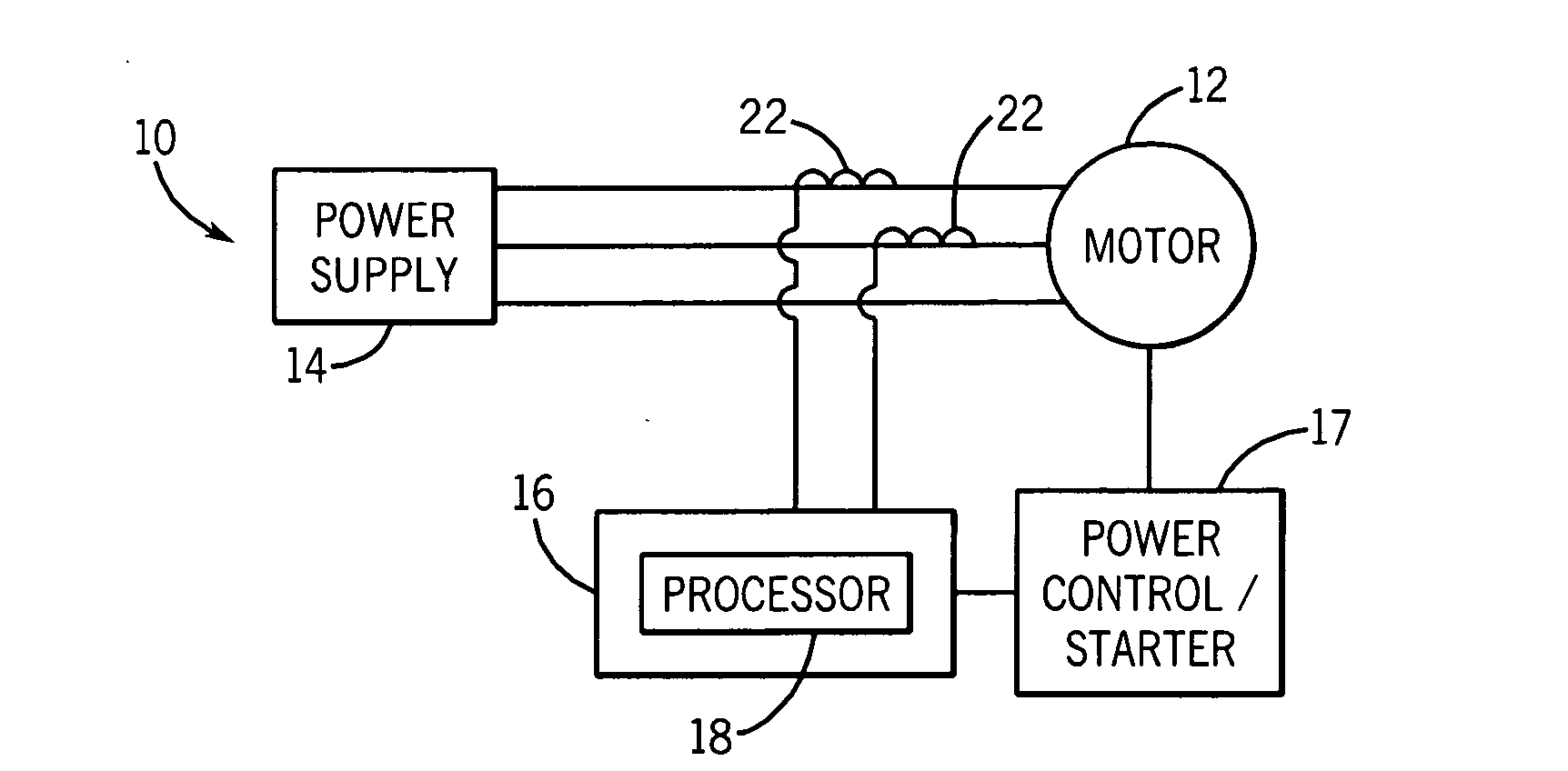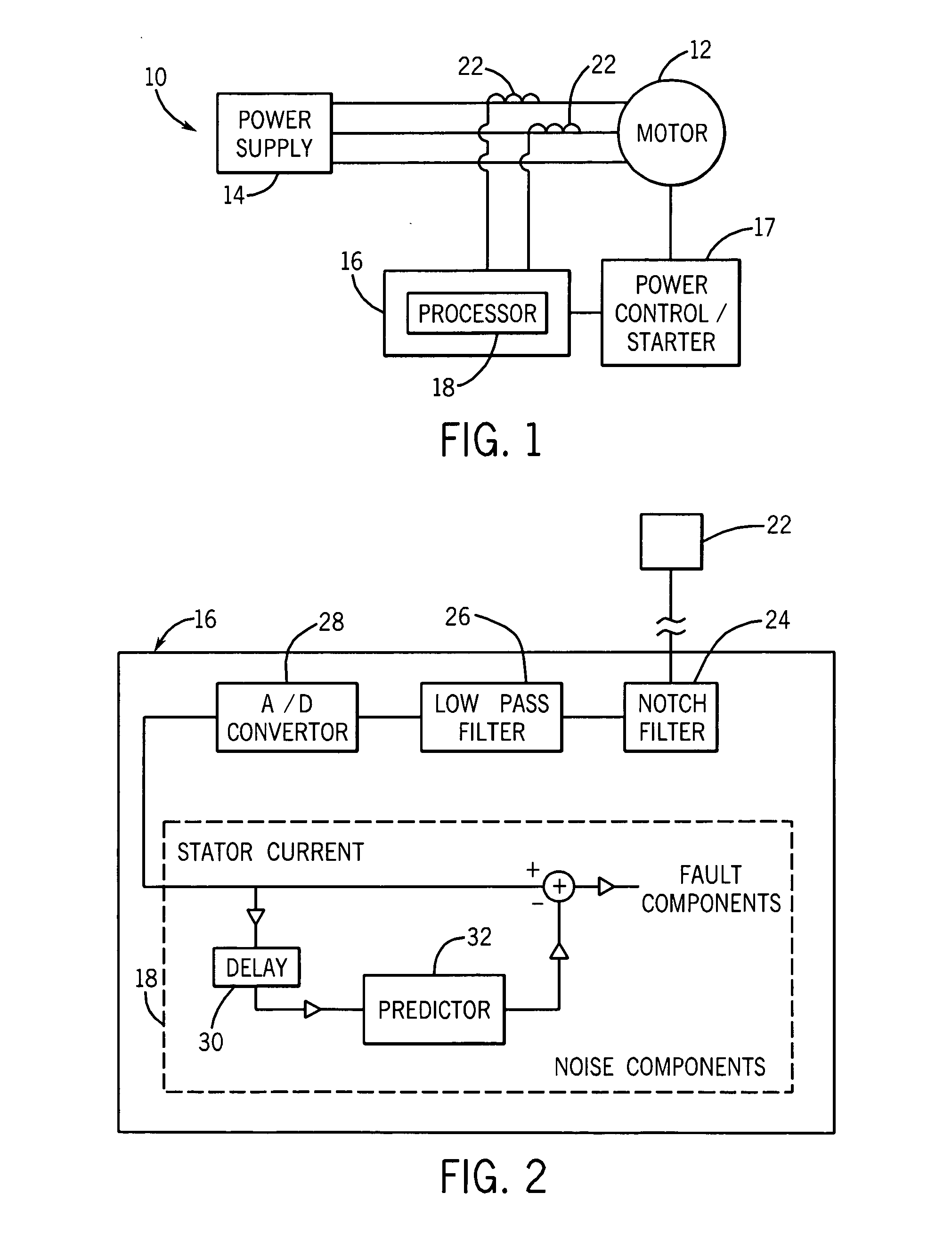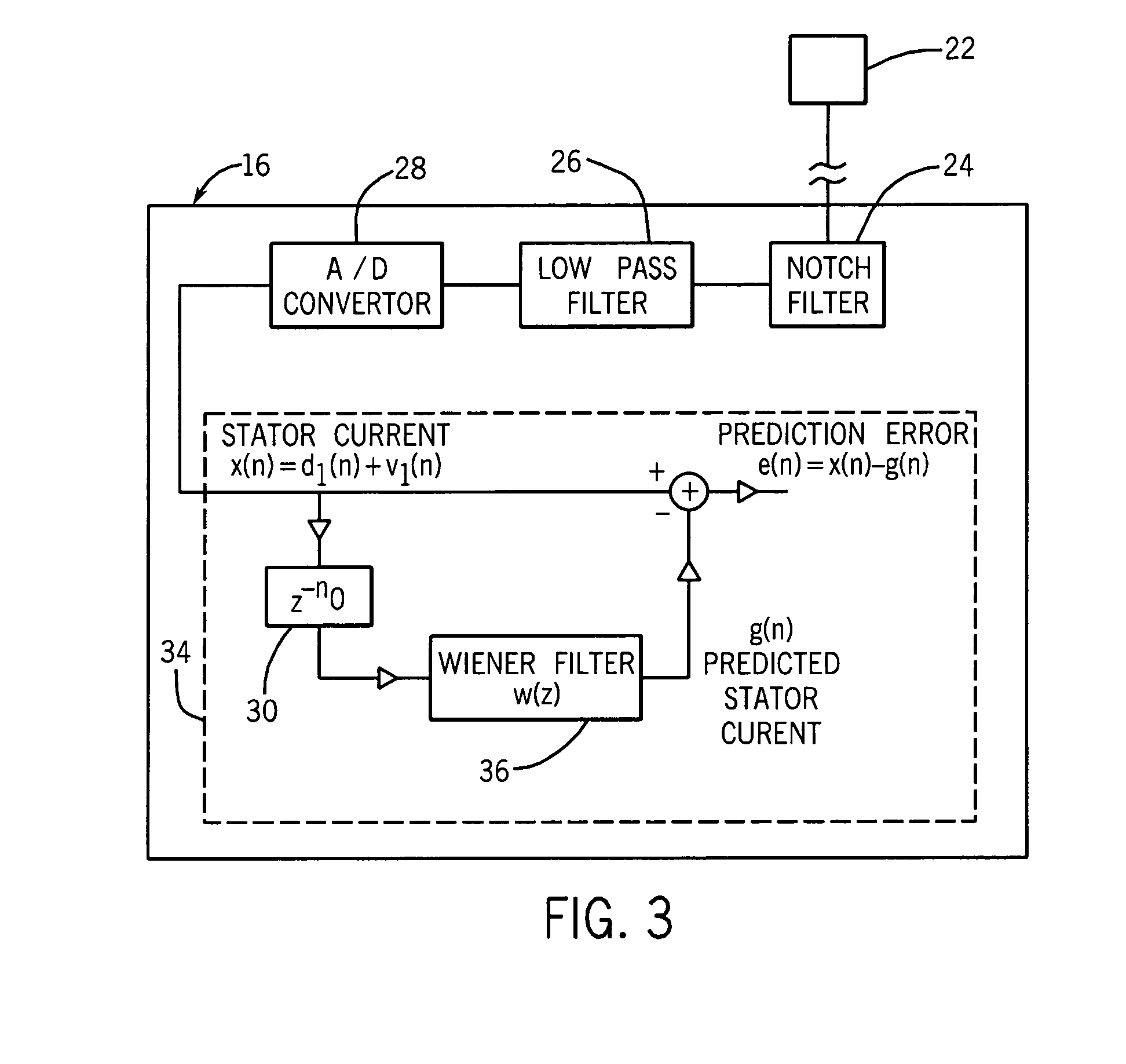System and method for bearing fault detection using stator current noise cancellation
a technology of stator current and noise cancellation, applied in the field of motors, can solve the problems of motor faults, bearing failures, and typical motor faults of three-phase induction motors, and achieve the effects of reducing the number of bearings
- Summary
- Abstract
- Description
- Claims
- Application Information
AI Technical Summary
Benefits of technology
Problems solved by technology
Method used
Image
Examples
Embodiment Construction
[0023]The embodiments of the invention set forth herein relate to the detection of abnormal conditions to predictively determine potential motor faults. Current signature analysis (CSA) is utilized to review raw data received from a plurality of sensors of a controller monitoring an operating motor. The system, which is preferably disposed within the controller, decomposes the sensed / monitored current into a non-fault component and a fault component, and performs a noise-cancellation operation to isolate the fault component of the current and generate a fault identifier. An operator of the monitored motor system is then proactively alerted of a potential fault prior to a fault occurrence.
[0024]Referring now to FIG. 1, a motor assembly, such as an induction motor, is configured to drive a load. The motor assembly 10 includes a motor 12 that receives power from a power supply 14. The motor assembly 10 also includes a controller 16 (i.e., current monitoring system) used to monitor, as ...
PUM
 Login to View More
Login to View More Abstract
Description
Claims
Application Information
 Login to View More
Login to View More - R&D
- Intellectual Property
- Life Sciences
- Materials
- Tech Scout
- Unparalleled Data Quality
- Higher Quality Content
- 60% Fewer Hallucinations
Browse by: Latest US Patents, China's latest patents, Technical Efficacy Thesaurus, Application Domain, Technology Topic, Popular Technical Reports.
© 2025 PatSnap. All rights reserved.Legal|Privacy policy|Modern Slavery Act Transparency Statement|Sitemap|About US| Contact US: help@patsnap.com



